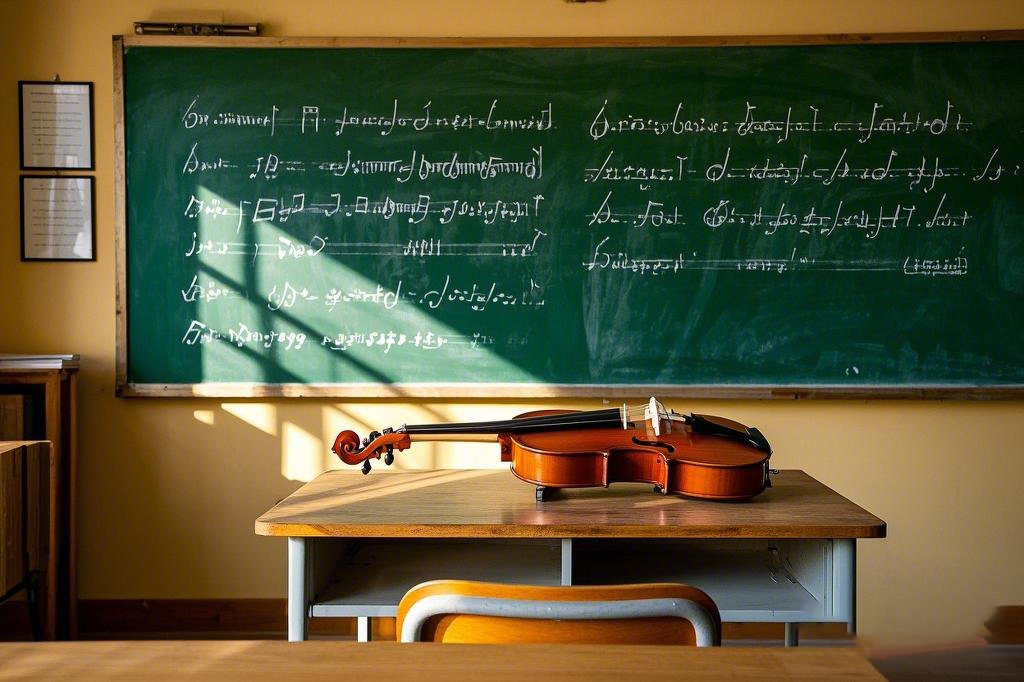Chinese Violin Pedagogy - Virtual Learning
Shang Kun 2025-03-03 161
Exploring Chinese Violin Pedagogy in the Age of Virtual LearningWith the world increasingly shifting toward digital experiences, the domain of music education is undergoing a transformation. Music enthusiasts, particularly those with a deep interest in traditional instruments like the Chinese violin (Erhu), are now finding themselves navigating the world of virtual learning. Gone are the days when aspiring musicians had to travel miles to find a teacher or attend a physical class. Today, with just a click, one can embark on a musical journey right from the comfort of their own home. But with this shift to virtual learning, some significant challenges arise, especially in fields as intricate and nuanced as Chinese Violin Pedagogy.
The Clash of Traditional Methodology and Virtual PlatformsChinese Violin Pedagogy has always been about tradition, personalized teaching, and face-to-face interaction. The nuanced bow strokes, finger placements, and intricate techniques of Erhu require not only verbal explanations but a hands-on demonstration. As such, one might ask: can these deeply ingrained traditional techniques be truly taught online, through a screen? The conflict arises when considering that the online realm lacks the sensory connection between teacher and student. How can a teacher assess the minute details, such as a student's posture or bow positioning, when everything is confined to a digital format? This stark shift challenges educators and students alike to find innovative ways to bridge the gap.
Is Virtual Learning Really Effective for Teaching the Chinese Violin?In the world of music education, particularly with instruments that demand a deep understanding of physical technique, the digital format is often seen with skepticism. Can it truly replicate the personalized feedback that an in-person lesson offers? How can a teacher correct a student's posture or refine the angle of their bow, without standing right next to them? These are pressing questions that have haunted both students and educators alike. But here’s the twist: virtual learning, when done right, opens up a world of possibilities. Not only does it make Chinese Violin Pedagogy more accessible, but it also provides opportunities for creative, interactive learning methods that can be adapted to each student’s needs.

Adapting Pedagogical Techniques for Virtual LearningTo make virtual learning a success, educators must be ready to adapt and evolve their teaching techniques. Instead of relying solely on traditional methods, the focus shifts towards leveraging the strengths of digital platforms. High-definition video calls, for example, can allow teachers to demonstrate techniques in a detailed, close-up manner. Furthermore, students can record their practice sessions and submit them for feedback, a method that ensures progress can be tracked over time. Still, there’s more: apps and software that analyze the student’s bow movements or posture in real-time are beginning to emerge, making virtual learning more interactive and tailored. These developments highlight the importance of innovation in maintaining the integrity of traditional music education in the digital age.
The Perks of Virtual Learning in Chinese Violin PedagogyYet, it’s not all about challenges. The rise of virtual learning brings with it a set of advantages that make the whole experience not just different, but better in many ways. For one, virtual classes provide an unmatched level of flexibility. Students can learn at their own pace, without the constraints of a fixed schedule. In addition, the ability to connect with teachers from across the world is a huge bonus. A student in Beijing can now learn from a renowned master in Shanghai or even overseas. Virtual learning creates a global classroom where the exchange of knowledge, techniques, and cultural understanding is limitless. It democratizes access to quality education, something that was once reserved for only a privileged few.
Building Virtual Communities of LearningOne of the most remarkable outcomes of online learning platforms is the emergence of virtual communities. Students can now interact with like-minded individuals, share experiences, and even collaborate on music projects despite being miles apart. Virtual communities offer a sense of belonging and motivation that can often be lacking in traditional learning settings. For instance, online forums and social media groups allow learners to discuss challenges, share tips, and celebrate milestones together. These communities become invaluable in ensuring that students stay engaged, motivated, and connected throughout their musical journey.
How to Make Virtual Learning a Success in Chinese Violin PedagogyThe question now is, how can both teachers and students ensure that virtual learning thrives in the context of Chinese Violin Pedagogy? It starts with an understanding that the virtual world requires a different kind of commitment. For teachers, it’s about embracing technology while retaining the essence of traditional methods. For students, it’s about actively engaging in the learning process, practicing diligently, and being open to feedback, even if it comes through a screen. Moreover, investing in quality equipment such as high-resolution cameras, proper lighting, and a reliable internet connection is key to ensuring that the online experience is smooth and effective.
Conclusion: A New Era for Chinese Violin EducationDespite the challenges, virtual learning offers a dynamic and exciting future for Chinese Violin Pedagogy. While the transition from traditional to digital may seem daunting, it is clear that both teachers and students are continuously finding innovative ways to adapt and thrive in the virtual space. The key lies in blending the best of both worlds—honoring traditional techniques while embracing modern technology to enhance the learning experience. So, why not embrace this new chapter in music education? With the right tools and mindset, the possibilities are endless for both students and teachers alike in the realm of Chinese Violin Pedagogy.
